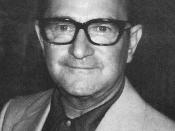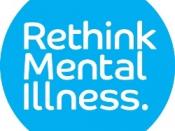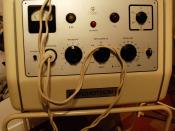1
Mental illness therapy: should electroconvulsive therapy be abolished?
Electroconvulsive therapy (ECT), as known as electric shock was first introduced in the late 1930s, which suggested using electricity to transform the mentation of mental illness patients. By passing a rupture of electricity two to three times in a length of thirty seconds each time in series, the emotion of patients could be stabilized and therefore could accelerate their speed of recovery. However, debate was provoked among scholars and general public (Hirshbein, 2011). While psychiatrists generally agree that such treatment is most effective for "severe or medication-resistant depression and catatonic states patients" (Ruben, 1986, p.503), the problem of side effect associated with treatment is continuously raised among patients. Psychiatrists and historians who support the adoption of electroconvulsive therapy highlight the advantages to life of patients with improved mentation (Braslow, 1996), while those patients who opposing the therapy attributed to its humanity, transient therapeutic consequent and long term memory loss (Andre, 2009; Keltner & Boschini, 2009; Felder, 2013). This essay would deeply discuss these arguments from different books and journals in order to demonstrate the importance of abolishing electroconvulsive therapy at this stage in long term. Linda Andre (2009), an author and former ECT psychiatric illness patient, stated that ECT was developed in the terrors of Nazi Germany and this inhumanity continues until now. During World War II, Germany was governed by the Nazis and started to create a practice named "euthanasia" to kill medical patients in 1941. In Lithuania, most patients would not be killed by shooting immediately but were starved gently and receiving different forms of electroconvulsive shocks medical experiment inside psychiatric hospital. According to the findings collected by Felder (2013), there were nearly 1,200 to 1,500 patients who died from so-called malnutrition within four years. Although the law and...


